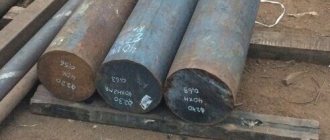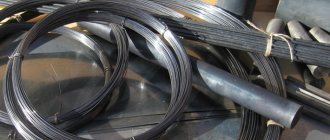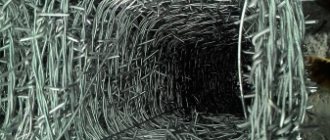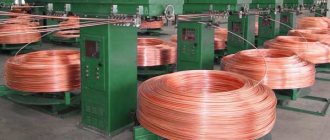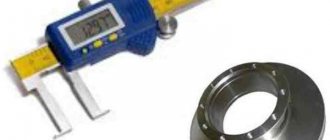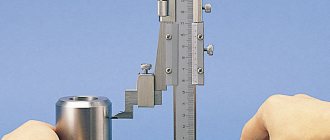home
About company
Directory
Galvanized sheet
Corrosion destroys about 10% of all metal produced in the world; every sixth or seventh blast furnace works in vain: the steel smelted in it completely turns into rust within a year. Even in developed countries with high technology, the damage caused by corrosion can reach 4% of GDP. One of the most effective ways to protect against corrosion is to apply a protective layer of zinc to the surface of metal structures. Galvanizing is several times cheaper than paint and varnish coatings, and, at the same time, extends the service life of the metal by 30-40 years.
Sheet (also rolled) galvanized steel is produced:
- hot galvanizing of thin-sheet cold-rolled steel coils;
- by applying galvanic coating;
- spraying (gas-thermal method);
- thermal diffusion galvanizing.
The most common is hot-dip galvanizing; this technology makes it possible to produce a strong and durable anti-corrosion coating with a thickness of 10 to 60 microns at the lowest cost. Matte white, sometimes with a gray tint without shine, the coating obtained by hot-dip galvanizing is inferior in decorative qualities to shiny and silver galvanized ones, but has greater hardness and excellent strength characteristics.
Galvanized sheet GOST 14918-80 (technical conditions and requirements)
Standard 14918-80 applies to cold-rolled carbon steel 0.5 to 2.5 mm thick that has been continuously hot-dip galvanized (which results in the formation of a corrosion-resistant Zn-Fe alloy on the metal surface). For galvanizing low-carbon steels, technical conditions are determined separately, by standard R 52246-2004.
| № | Classification of galvanized steel GOST 14918-80 | Groups, categories, classes | Abbreviation (used for symbolic designation) |
| 1 | Assignment Groups | General purpose | HE |
| For cold stamping | XSh | ||
| For cold profiling | HP | ||
| For painting | PC | ||
| 2 | Hood categories | Very deep draw | VG |
| Deep | G | ||
| Normal | N | ||
| 3 | Tread quality | Reduced thickness variation | UR |
| Normal thickness variation | HP | ||
| 4 | Galvanization layer thickness, class | I class | 1 |
| II class | 2 | ||
| Elevated | P | ||
| 5 | Appearance of galvanization/type of crystallization pattern (by agreement with the customer) | With crystallization pattern | KR |
| Without crystallization pattern | MT |
Galvanizing class
Another important point that you should pay attention to when purchasing any profiled products is the amount of zinc applied to the rolled product. The degree of susceptibility of the metal to corrosion depends on it. Unfortunately, the buyer will not be able to visually evaluate this parameter, however, a responsible manufacturer will definitely provide regulatory documents and certificates of conformity for the metal, which will indicate the galvanizing class. There are 3 classes, the zinc content of which is indicated below:
Metal with the second class of galvanizing is the most affordable and is more often offered to customers who purchase inexpensive corrugated roofing.
Metal with the first and higher (P) class is recommended for use in regions with increased atmospheric loads or at critical industrial facilities in our region.
Galvanized sheet, dimensions according to GOST 19904-90 (assortment)
Dimensions, maximum deviations and requirements for manufacturing accuracy for galvanized steel are established by the GOCT 19904-90 assortment in the same way as for non-galvanized cold-rolled sheet steel.
Galvanized steel according to specifications in accordance with GOCT 14918-80 is manufactured in widths from 700 to 1800 mm (size increments depending on the range of 50, 100 and 150 mm), lengths from 1000 to 6000 mm (size increments 20, 80, 100, 150, 200, 300, 500 mm), however, by agreement with the consumer, if necessary, other sizes can be installed.
The thickness of the galvanized sheet is regulated in the range from 0.5 to 2.55 mm, and the assortment determines the following dimensional step:
- thickness range 0.5-0.8 mm - step is 0.05 mm;
- range 0.8-1.8 mm - step 0.1 mm;
- range 1.8-2.5 - step 0.2, last - 0.3 mm.
Marking of corrugated sheets
Regulatory documents and GOSTs oblige manufacturers to label their products. Depending on the marking, the profile can be:
- Stenov. In this case, it is marked with the letter “C”. This profile is proposed to be used on vertical surfaces, since the height of the profile is not high (from 8 mm to 44 mm), and the thickness starts from 0.35 mm and does not exceed 0.6 mm. However, the load-bearing capacity of wall corrugated sheeting allows its use to cover a roof with a large angle of inclination, provided that a reliable rafter system or even a continuous sheathing is installed.
- Bearing. For roofing, a corrugated sheet marked with the letter “H” is recommended. The height of the profile is significantly higher than that of a wall profile (up to 114 mm); accordingly, the stiffening ribs provide greater load-bearing capacity. This material is made of steel up to 0.9 mm thick, so it can withstand significant weight loads. The use of such corrugated sheeting is possible even on flat roofs.
- Universal. The characteristics of this profile allow it to be used for all types of construction work. Universal type corrugated sheets marked “NS” have average characteristics of profile height and sheet thickness. This profile is suitable for both fences and roofs with any slope.
It should be noted that this or that marking does not oblige the consumer to use corrugated sheets only in accordance with it. When choosing a material, many factors should be taken into account, for example, the purpose of the building, the angle of inclination and length of the slope, features of the rafter system, and so on. The lower the roof slope and the shorter the pitch of the sheathing, the higher the profile is required.
Weight of galvanized sheet
The weight of a galvanized sheet (one square meter) can theoretically be calculated using the formula:
M=M1×t1+M2×t2
(1)
Where:
- M - weight of 1 m² of galvanized sheet, kg;
- M1 - weight of 1 m² of steel sheet without a cladding layer 1 mm thick;
- t1 is the thickness of the steel sheet without coating;
- M2 - weight of 1 m² of zinc cladding layer 1 mm thick;
- t2 is the thickness of the zinc layer on both sides of the sheet.
The specific gravity of carbon steel is 7.85 g/cm³, or, for convenience of calculations, it is generally accepted that 1 m² of sheet steel with a thickness of 1 mm weighs 7.85 kg. The specific gravity of zinc is slightly less - 7.13 g/cm³, that is, 1 m² of zinc with a thickness of 1 mm weighs 7.13 kg. Taking into account these quantities, formula (1) can be rewritten:
M=7.85×t1+7.13×t2
The thickness of the zinc layer depends on the coating class (GOCT 14918-80) and is indicated in the symbol:
| Class | Limit values for layer thickness, mm | Weight of tread layer on both sides, kg |
| I | From 0.018 to 0.04 Average value 0.029 | 0.258-0.570 Average 0.414 |
| II | From 0.01 to 0.018 Average value 0.014 | 0.1425-0.258 Average 0.200 |
| P (increased) | From 0.04 to 0.06 | 0.57-0.855 Average 0.712 |
To calculate the weight of a galvanized sheet, you can also use a formula that takes into account the weight of the coating depending on the class of layer thickness:
M=7.85×t1+Mp.s., where:
- M - galvanized sheet weight 1 m², kg
- t1 is the thickness of the steel sheet without coating;
- Mp.s. - the average weight of the tread layer depending on the thickness class, the value is standardized by GOCT 14918-80.
To calculate how much a galvanized sheet weighs (the weight of one sheet of the required size), use the formula:
Msheet=M×S, where:
- Msheet - weight of one galvanized sheet, kg;
- M – weight of 1 m², kg;
- S—sheet area, m².
Considering that the GOST 19904-90 assortment allows deviations from the design weight of up to 3% (due to regulated maximum deviations in thickness, length and width), as well as taking into account the small thickness of the cladding layer and the small difference between the specific gravity of steel and zinc alloy ( which may contain lead and aluminum), the theoretically calculated mass may differ slightly from the actual weight.
| № | Sheet thickness, mm | Weight of 1 m² of steel without zinc coating , kg | Weight of 1 m² of galvanized steel, 1 class of coating thickness , kg | Weight of 1 m² of galvanized steel, class 2 coating thickness , kg | Weight of 1 m² of galvanized steel, coating thickness class P , kg | Number of m² per ton of galvanized steel class 2 |
| 1 | 0,50 | 3,925 | 4,339 | 4,125 | 4,637 | 242,42 |
| 2 | 0,55 | 4,317 | 4,731 | 4,517 | 5,029 | 221,36 |
| 3 | 0,60 | 4,710 | 5,124 | 4,910 | 5,422 | 203,67 |
| 4 | 0,65 | 5,103 | 5,517 | 5,303 | 5,815 | 188,60 |
| 5 | 0,70 | 5,495 | 5,909 | 5,695 | 6,207 | 175,59 |
| 6 | 0,75 | 5,888 | 6,302 | 6,088 | 6,600 | 164,2 |
| 7 | 0,80 | 6,280 | 6,694 | 6,480 | 6,992 | 154,32 |
| 8 | 0,90 | 7,065 | 7,479 | 7,265 | 7,777 | 137,65 |
| 9 | 1,00 | 7,850 | 8,264 | 8,050 | 8,562 | 124,22 |
| 10 | 1,10 | 8,635 | 9,049 | 8,835 | 9,347 | 114,09 |
| 11 | 1,20 | 9,420 | 9,834 | 9,620 | 10,132 | 103,95 |
| 12 | 1,50 | 11,775 | 12,189 | 11,975 | 12,487 | 83,51 |
| 13 | 2,00 | 15,700 | 16,114 | 15,900 | 16,412 | 62,89 |
| 14 | 2,50 | 19,625 | 20,039 | 19,825 | 20,337 | 50,45 |
According to GOCT 14918-80, galvanized steel can be manufactured with a differentiated coating: on one side thickness class No. 2, and on the other - No. 1 or P, which is taken into account when calculating weight.
Metal base | sale of rolled metal in Moscow
Galvanized sheet. weight m2, 1 sheet table
| Galvanized sheet GOST 14918-80 steel 08ps/kp | weight of galvanized sheet m2 | weight of 1 sheet 1250x2500 |
| The sheet is galvanized. 0.4 | 3.34 kg/m2 | 10.43 kg/sheet |
| The sheet is galvanized. 0.45 | 3.73 kg/m2 | 11.65 kg/sheet |
| The sheet is galvanized. 0.5 | 4.13 kg/m2 | 12.9 kg/sheet |
| The sheet is galvanized. 0.55 | 4.52 kg/m2 | 14.12 kg/sheet |
| The sheet is galvanized. 0.6 | 4.91 kg/m2 | 15.34 kg/sheet |
| The sheet is galvanized. 0.7 | 5.70 kg/m2 | 17.81 kg/sheet |
| The sheet is galvanized. 0.75 | 6.09 kg/m2 | 19.03 kg/sheet |
| The sheet is galvanized. 0.8 | 6.48 kg/m2 | 20.25 kg/sheet |
| The sheet is galvanized. 0.9 | 7.27 kg/m2 | 22.71 kg/sheet |
| The sheet is galvanized. 1.0 | 8.05 kg/m2 | 25.15 kg/sheet |
| The sheet is galvanized. 1.2 | 9.62 kg/m2 | 30.06 kg/sheet |
| The sheet is galvanized. 1.5 | 11.97 kg/m2 | 37.40 kg/sheet |
| The sheet is galvanized. 2.0 | 15.9 kg/m2 | 49.68 kg/sheet |
| The sheet is galvanized. 2.5 | 19.82 kg/m2 | 61.93 kg/sheet |
| The sheet is galvanized. 3.0 | 23.84 kg/m2 | 74.5 kg/sheet |
| The sheet is galvanized. 3.5 | 27.47 kg/m2 | 85.84 kg/sheet |
| The sheet is galvanized. 4.0 | 31.4 kg/m2 | 98.12 kg/sheet |
| The sheet is galvanized. 5.0 | 39.25 kg/m2 | 122.65 kg/sheet |
| The sheet is galvanized. 6.0 | 47.1 kg/m2 | 147.18 kg/sheet |
| The sheet is galvanized. 8.0 | 62.8 kg/m2 | 196.25 kg/sheet |
| The sheet is galvanized. 10.0 | 78.5 kg/m2 | 245.312 kg/sheet |
| The sheet is galvanized. 12.0 | 94.2 kg/m2 | 294.37 kg/sheet |
| Galvanized sheet GOST 14918-80 steel 08ps/kp | weight m2 |
| Sheet/roll galvanized. 0.25 | 1.963 kg/m2 |
| Sheet/roll galvanized. 0.3 | 2.35 kg/m2 |
| Sheet/roll galvanized. 0.33 | 2.51 kg/m2 |
| Sheet/roll galvanized. 0.35 | 2.747 kg/m2 |
| Sheet/roll galvanized. 0.37 | 2.904 kg/m2 |
| Sheet/roll galvanized. 0.38 | 2.983 kg/m2 |
| Sheet/roll galvanized. 0.4 | 3.14 kg/m2 |
| Sheet/roll galvanized. 0.43 | 3.375 kg/m2 |
| Sheet/roll galvanized. 0.45 | 3.532 kg/m2 |
| Sheet/roll galvanized. 0.47 | 3.69 kg/m2 |
| Sheet/roll galvanized. 0.5 | 3.925 kg/m2 |
| Sheet/roll galvanized. 0.55 | 4.318 kg/m2 |
| Sheet/roll galvanized. 0.6 | 4.71 kg/m2 |
| Sheet/roll galvanized. 0.65 | 5.103 kg/m2 |
| Sheet/roll galvanized. 0.68 | 5.338 kg/m2 |
| Sheet/roll galvanized. 0.7 | 5.495 kg/m2 |
| Sheet/roll galvanized. 0.75 | 5.887 kg/m2 |
| Sheet/roll galvanized. 0.8 | 6.28 kg/m2 |
| Sheet/roll galvanized. 0.85 | 6.672 kg/m2 |
| Sheet/roll galvanized. 0.9 | 7.065 kg/m2 |
| Sheet/roll galvanized. 0.95 | 7.458 kg/m2 |
| Sheet/roll galvanized. 1.0 | 7.85 kg/m2 |
| Sheet/roll galvanized. 1.1 | 8.635 kg/m2 |
| Sheet/roll galvanized. 1.15 | 9.027 kg/m2 |
| Sheet/roll galvanized. 1.2 | 9.42 kg/m2 |
| Sheet/roll galvanized. 1.25 | 9.81 kg/m2 |
| Sheet/roll galvanized. 1.3 | 10.2 kg/m2 |
| Sheet/roll galvanized. 1.35 | 10.59 kg/m2 |
| Sheet/roll galvanized. 1.4 | 10.99 kg/m2 |
| Sheet/roll galvanized. 1.45 | 11.38 kg/m2 |
| Sheet/roll galvanized. 1.5 | 11.77 kg/m2 |
| Sheet/roll galvanized. 1.6 | 12.56 kg/m2 |
| Sheet/roll galvanized. 1.7 | 13.34 kg/m2 |
| Sheet/roll galvanized. 1.75 | 13.73 kg/m2 |
| Sheet/roll galvanized. 1.8 | 14.3 kg/m2 |
| Sheet/roll galvanized. 1.85 | 14.52 kg/m2 |
| Sheet/roll galvanized. 1.9 | 14.91 kg/m2 |
| Sheet/roll galvanized. 1.95 | 15.3 kg/m2 |
| Sheet/roll galvanized. 2.0 | 15.7 kg/m2 |
| Sheet/roll galvanized. 2.3 | 18.05 kg/m2 |
| Sheet/roll galvanized. 2.5 | 19.62 kg/m2 |
| Sheet/roll galvanized. 3.0 | 23.55 kg/m2 |
| Sheet/roll galvanized. 3.5 | 27.47 kg/m2 |
| Sheet/roll galvanized. 4.0 | 31.4 kg/m2 |
Roofing profile
Which brand or type of corrugated sheeting is more suitable for the roof? The most popular are profiles with corrugation heights from 8 to 21 mm. The height of the wave (corrugation) is responsible for the load-bearing capacity, strength and reliability of the finished roof.
According to the standards, a profile marked C8 is considered a wall profile, however, such corrugated sheeting is often used on the roof of outbuildings, which is quite acceptable. But the angle of inclination of the slope should be 45 degrees or more, a continuous sheathing is highly desirable, and in places where ventilation or chimneys exit, additional sheathing is necessary.
The thickness of the metal in this case should be no less than 0.45 mm, and even this does not guarantee that when moving on such a roof, if necessary, the metal will not be pressed through. It is better to increase the overlap of sheets during installation by two waves to avoid leaks during rain or when snow melts.
C20 corrugated sheeting is most often used on the roof. Its wave height is 18 or 20 mm (depending on the manufacturer), which increases the load-bearing capacity. The optimal thickness is selected 0.45 or 0.5 mm. Let us note once again that the strength of the roofing covering and the ability to withstand significant loads, be it snow or the weight of the person servicing the roof, depend on the thickness of the metal and the height of the profile. The thicker and higher the profile, the better.
Despite the fact that this corrugated sheeting is marked with the letter “C” and is intended for vertical surfaces, some manufacturers offer this profile with the mark “R”, which means roofing. And all because it differs from the usual C20 profile by the presence of a capillary groove.
Profile C21 is similar in appearance to C20, but has a corrugation height of 21 mm, the wave width is equal to the wave pitch and is 35 mm, which visually makes such corrugated sheeting more attractive.
Profile NS35 is the initial brand of full-fledged roofing corrugated sheeting. The 35 mm high trapezoidal waves make it particularly durable. If we look at the profile drawing, we will see semicircular grooves in each lower and upper wave; they play the role of additional stiffening ribs.
The H60 profile is made from fairly high quality steel, the thickness of which is usually from 0.7 mm. The wave height of 60 mm and additional stiffening ribs make it so durable that the service life of such a roofing coating will be 50 years or more.
It is worth noting that despite the fact that high profiles NS35, H60 and so on have a significant margin of safety, their use on the roof of a private house is not economically profitable, since due to the significant wave height and the thicknesses of the steel sheet used, reinforced sheathing is necessary for such corrugated sheeting, which increases the cost of work, and the metal itself will cost much more than lower profiles.
Areas of use
In the process of manufacturing parts and blanks from it, galvanized material is subjected to stamping and bending, both methods do not violate the integrity of the sheet. High anti-corrosion properties allow the material to be used in the production of household appliances, construction, pipe rolling, and the automotive industry.
The use of galvanizing in the construction industry is especially important. After galvanizing, the material is painted with polymer dyes and compositions based on epoxy resin in molten furnaces. Polymer-coated steel serves as the basis for the production of roofing and wall materials, the benefits of which become obvious.
Corrugated sheeting, metal tiles, roofing steel - these are the names of lightweight, durable and practical roofing coverings for modern cottages. In addition to roofing work, galvanization is used for the manufacture of:
- metal decorative picket fence;
- when installing seam roofs as a picture;
- water pipes;
- strip - long-rolled tape;
- mounting profiles for plasterboard, euroboards, plastic and other wall coverings;
- perforated fasteners and various brackets;
- roofing aprons, linings, elements of gutters, ridges, valleys and other auxiliary parts of the roof;
- ventilation ducts;
- adjustable trays for cables in electrical engineering, instrument housings, devices, etc.
Corrugated sheet covering
First, let's decide on the appearance of the material. The corrugated sheet can be simply galvanized without a polymer coating or with a polymer coating.
In both cases, the steel sheet is coated with a zinc compound that protects the material from corrosion. This is realized by the hot method, when the sheets are immersed in molten zinc, or by the electrolytic method, when zinc powder settles on the surface of the steel during the electrolysis process.
Needless to say, regular galvanizing without a polymer coating will be the cheapest option to use. Such a sheet is not suitable for the roof of a residential building, but using it on the roof of a garage, utility room or other auxiliary building is quite justified. The service life of such corrugated sheets is 10-12 years and manufacturers rarely give a guarantee for their rental for more than 2 years.
Corrugated sheeting with a polymer coating will last much longer on the roof. To do this, additional production steps will include priming on both sides of the profiled galvanized sheet and subsequent spraying of a polymer coating on one or both sides.
Advantages and disadvantages
Advantages of galvanized steel:
- preservation of strength characteristics by the base metal;
- sufficient plasticity for the production of bent profiles without peeling off the protective layer;
- high economic effect from the protective galvanizing method;
- durability of products;
- light weight.
Flaws:
- low strength of the surface layer - in case of mechanical damage, a growing focus of corrosion is formed, which, if not noticed and eliminated in time, will cause a complete replacement of the product;
- zinc coating cannot be used in aggressive environments - in the presence of inorganic acids and their salts;
- limitation on temperature application - the melting point of zinc is 420....460°C.
Advantages of galvanized steel:
- high corrosion resistance;
- preservation of strength characteristics by the base metal;
- sufficient plasticity for the production of bent profiles without peeling off the protective layer;
- high economic effect from the protective galvanizing method;
- durability of products;
- light weight.
Flaws:
- low strength of the surface layer - in case of mechanical damage, a growing corrosion center is formed, which, if not noticed and eliminated in time, will cause a complete replacement of the product;
- zinc coating cannot be used in aggressive environments - in the presence of inorganic acids and their salts;
- limitation on temperature application - the melting point of zinc is 420....460°C.
Symbol
For the symbolic designation, the abbreviation “OTs” is used before the fractional line, above the line the parameters established by the assortment according to GOCT 19904-90 are indicated, below the line are the parameters regulated by the technical specifications GOCT 14918-80:
If galvanized steel is supplied in the form of rolls, then only two dimensions are shown: thickness and width; if the type of supply is galvanized sheet, the dimensions are indicated in this order: thickness of the galvanized sheet, width and length.
Corrugated sheet color
Another parameter that you need to decide on when purchasing corrugated sheets for the roof is the color of the polymer coating. Each owner makes the choice of color for the roof of a house, garage, bathhouse or any other building himself, based on personal preferences and the desire to maintain the unity of style of all buildings on his territory.
There are several basic palettes that manufacturers use. Basic colors are RR-coded and RAL-coded. The RR palette is not so diverse and is deciphered by a two- or three-digit number.
The most popular colors among rolled metal manufacturers are the colors of the German RAL standard. The palette includes more than a thousand colors and shades, each of which has a four-digit code.
In conclusion, let us pay attention to the main points that should be taken into account when choosing roofing corrugated sheets:
- The type of profile must correspond to the angle of inclination of the roof, the type of rafter system and the pitch of the sheathing.
- The profile must be made of galvanized steel with a polymer coating.
- The metal thickness is not less than 0.45 mm, excluding the polymer coating.
- The galvanizing class must be specified in the accompanying documents for your order.
- The metal must have certificates from the manufacturer and a rental guarantee from the manufacturer.
Reason for corrosion resistance
Galvanized products can be compared to a composite material that has electrochemical cathodic protection in the iron-zinc pair. The light metal, acting as an anode, takes on oxidative reactions and gradually breaks down, thereby protecting the base metal. In addition, zinc itself has high chemical resistance to atmospheric influences, so its service life is quite long.
Galvanized products can be compared to a composite material that has electrochemical cathodic protection in the iron-zinc pair. The light metal, acting as an anode, takes on oxidative reactions and gradually breaks down, thereby protecting the base metal. In addition, zinc itself has high chemical resistance to atmospheric influences, so its service life is quite long.

